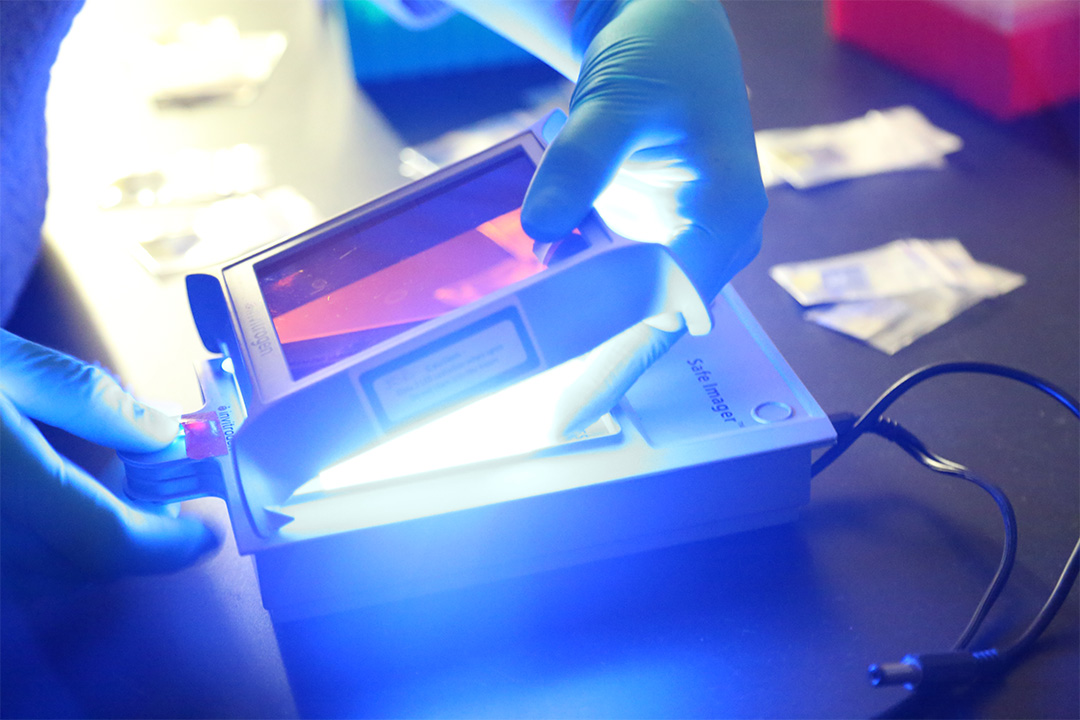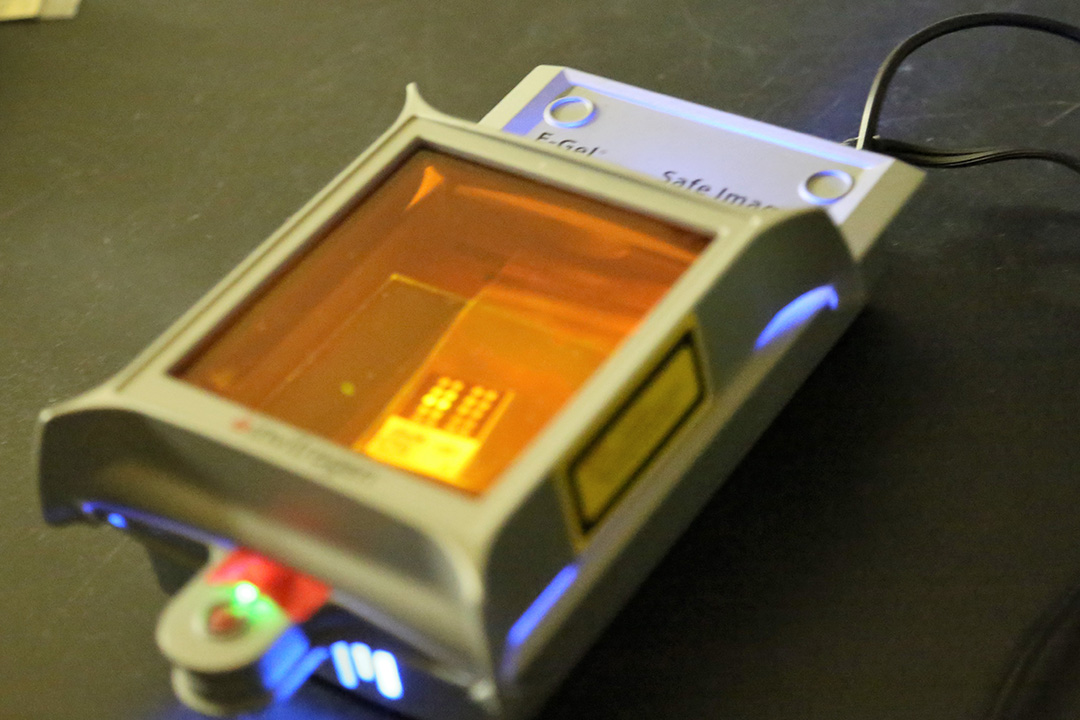// NEWS RELEASE
DNA Tagging Detects Counterfeit Equipment
CCDC Chemical Biological Center Public Affairs | December 20th, 2018
DNA Tagging Detects Counterfeit Equipment
DEVCOM CBC Public AffairsDecember 20th, 2018

RDECOM ECBC Biologist Kim Berk places a paper assay into the imager to determine the authenticity of equipment. Photo credit: Brad Kroner.
In order to identify counterfeit equipment and remove them from the supply chain, RDECOM ECBC scientists have developed a method to use DNA tags to identify counterfeit equipment.
Anyone who’s ever been burned by a knockoff pair of counterfeit designer sunglasses can tell you: counterfeit is never better than the real thing.
The U.S. Army, after learning that counterfeit equipment entered the supply chain, is now developing a method for identifying counterfeit equipment by marking authentic equipment with DNA tags.
A few years ago, the U.S. Senate Armed Services Committee issued a report stating counterfeit components were frequently found in the supply chain, usually electronics. They noted that the equipment was generally of a lesser quality than required.
In response, the Defense Logistics Agency (DLA) funded a project researching the use of DNA tags to track components, a program conducted by the U.S. Army Research Development and Engineering Command Edgewood Chemical Biological Center. DNA was chosen for its stability: it’s robust and doesn’t degrade easily in different temperatures.
“Cheap knockoffs came into the supply chain, which maybe didn’t go through the same quality control and potentially even had malware, so the DLA identified this as a big issue,” explained research biologist Matt Lux. “The DLA had a mandate to mark these components with DNA.”
The challenge with existing DNA tagging is the requirement to either send components to the lab for a test or to employ highly trained technicians and specialized equipment in the field and still have to wait at least 30 minutes. Checking the tag quickly and easily was not possible in the field, so RDECOM ECBC biologists came up with a modified approach and developed a field assay for identification.
“Our approach uses DNA as a tag but it’s formulated in such a way that it requires little instrumentation or training to verify,” Lux said. “You swab it, put it in a bag and, in just minutes, a pattern emerges on the ticket. If the pattern matches, you know it’s authentic.”
RDECOM ECBC’s collaborators, Applied DNA Sciences (ADNAS), have commercial products for DNA tagging, including supplying that to DLA, but their services require a lab. RDECOM ECBC and ADNAS are operating under a cooperative research and development agreement (CRADA).
“So what we’ve done is transition the proof of concept, prototype-level work to them for our approach so they can commercialize it,” Lux said. “It does work, but one downside is that the amount of DNA they have to put into the tag is too high for some applications, so we’re hoping to obtain future funding to solve that problem. We want to work on improving the system so less DNA is required for the tags.”
Biologist Kim Berk said the team is also working to make the DNA tag “unhackable.”

“Someone could swab our barcode, sequence it, and in theory, figure out what the tag is and put it on their counterfeit equipment,” she said.
The science behind the DNA tags involves a process called toeholds.
Basically, two pieces of DNA are attached, along with a flourophore bond and a quencher, both of which can emit light.
When the pieces remain attached, they don’t light up, but when the two strands are broken apart, they will light up.
Berk said the project is unique in that it uses DNA as a tag without using an amplification step.
“It’s a really cool technology because usually when DNA is involved there’s some sort of amplification step necessary, because DNA is small and difficult to visually detect,” Berk said. “Using the right fluorophore makes the difference.”
Lux said the technology could also be transitioned to groups outside the military: the intelligence community, law enforcement and maybe the U.S. Treasury. These options are being explored by RDECOM ECBC and ADNAS.
The U.S. Army Combat Capabilities Development Command (DEVCOM) leads in the discovery, development and delivery of technology-based capabilities to enable Soldiers to win our nation’s wars and come home safely. DEVCOM is a major subordinate command of the U.S. Army Futures Command. The DEVCOM Chemical Biological Center is the Army’s principal research and development center for chemical and biological defense technology, engineering and field operations. The DEVCOM Chemical Biological Center is headquartered at Aberdeen Proving Ground, Maryland.
